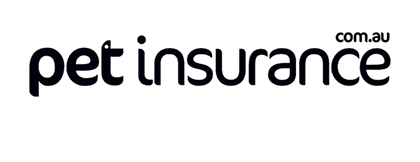Considering pet insurance? Key product information unpacked

Pet insurance can help cover a portion of eligible pet healthcare costs if your fur baby gets sick or injured unexpectedly. From your pet’s breed to different policy types to key product features, there’s lots to consider before taking out a policy.
When reviewing pet insurance, remember pet insurance generally covers larger, unexpected pet healthcare costs and may not cover routine costs like flea and worm preventive treatments or vaccinations, for example.
So, where’s a good place to start? Below are a few key factors to keep top of mind when looking into pet insurance.
- Your pet’s breed, healthcare needs and the cost of pet healthcare;
- different policy types; and
- product features like the annual benefit limit and value-added services.
So, why does breed matter?
Pet health conditions can vary depending on the breed of dog or cat, so research your pet’s breed profile so you understand common breed-specific conditions that your pet may experience, including the average costs for veterinary care. Data from PetSure (the brand behind petinsurance.com.au), shows Golden Retrievers can be prone to gastrointestinal problems, and treatment costs for this condition can be as high as $19,500.*
When reviewing pet insurance, you want to consider a policy that will cover your fur baby for the type of treatments they could be likely to need. Always check the policy product disclosure statement (PDS) to ensure you understand what might be covered under the policy.
Also, keep in mind that there are many factors that influence pet insurance pricing so consider how this will fit into your budget.
What are some of the different policy types?
The Australian Federal Government’s MoneySmart.gov.au website defines several types of pet insurance. In the below section, we unpack some of the different policy types, usually grouped into two main categories.
- Combined Accidental Injury and Illness policies, with cover for eligible vet treatments if your pet is in an accident or gets sick.
- Stated Events policies such as specified conditions cover for indoor cats or basic events policies that cover specified illnesses and/or accidental injuries only.
You can review the range of policy types available from petinsurance.com.au for dogs here, and cats here.
When comparing the various policy types available, consider the features of each and your budget to determine what best suits you and your pet.
Most insurers won’t cover pre-existing medical conditions, which means any condition your pet shows signs and symptoms of before being insured. Read the PDS to see what exclusions apply if your pet is already sick or injured.
Ok, so what should I keep an eye out for?
Annual benefit limit
Policies come with annual benefit limits, which is the maximum amount you can claim during a policy period, which is usually 12 months. Check the PDS for a specific product you are considering, but generally for petinsurance.com.au products, annual limits range from $20,000 – $30,000 depending on the level of cover.
Sub-limits
Some pet insurance policies have sub-limits for specific illnesses like tick paralysis, cruciate ligament surgery or hip dysplasia for example.
The benefit percentage
The benefit percentage for petinsurance.com.au policies is generally 80%. This is the amount you’ll see back in your pocket after making an eligible claim for your four-legged friend.
Excess level
The excess amount is the amount you pay before the insurance cover kicks in. You can generally increase the excess amount to reduce your premium but when it comes time to claim, you’ll pay the excess (normally $0 to $500), which is deducted from the amount you’re reimbursed.
Waiting Periods
Waiting periods (before you can submit a claim) can vary based on the accident or illness, for example 0-2 days for accidental injury, 14-30 days for illnesses, and 90-180 days for cruciate ligament conditions, starting from policy purchase date.
Value-added services
petinsurance.com.au policies come with a range of sweeteners or value-added services including:
- GapOnly®: an innovative payment solution that means you simply pay the gap (the difference between the vet’s invoice and the eligible claim benefit), which reduces your upfront out-of-pocket cost.
- VetChat: a vet telehealth service that offers you 24/7 online access to Australian-registered vets for advice and triage. Vet telehealth services, like VetChat, are a great way to quickly get advice and clarity on next steps if you’re worried about your fur baby.
- PetScripts discount: petinsurance.com.au policyholders get a 50% discount on pet prescription medication from leading online pet pharmacy, PetScripts.
Value-add services may be useful when it comes to navigating your pet’s wellbeing, so make sure you factor this into your research too.
Doing your homework is an important step before making any decision about pet insurance, to ensure you consider a policy that best suits your pet, lifestyle and product preferences. Happy researching!
*PetSure claims data for 2022
